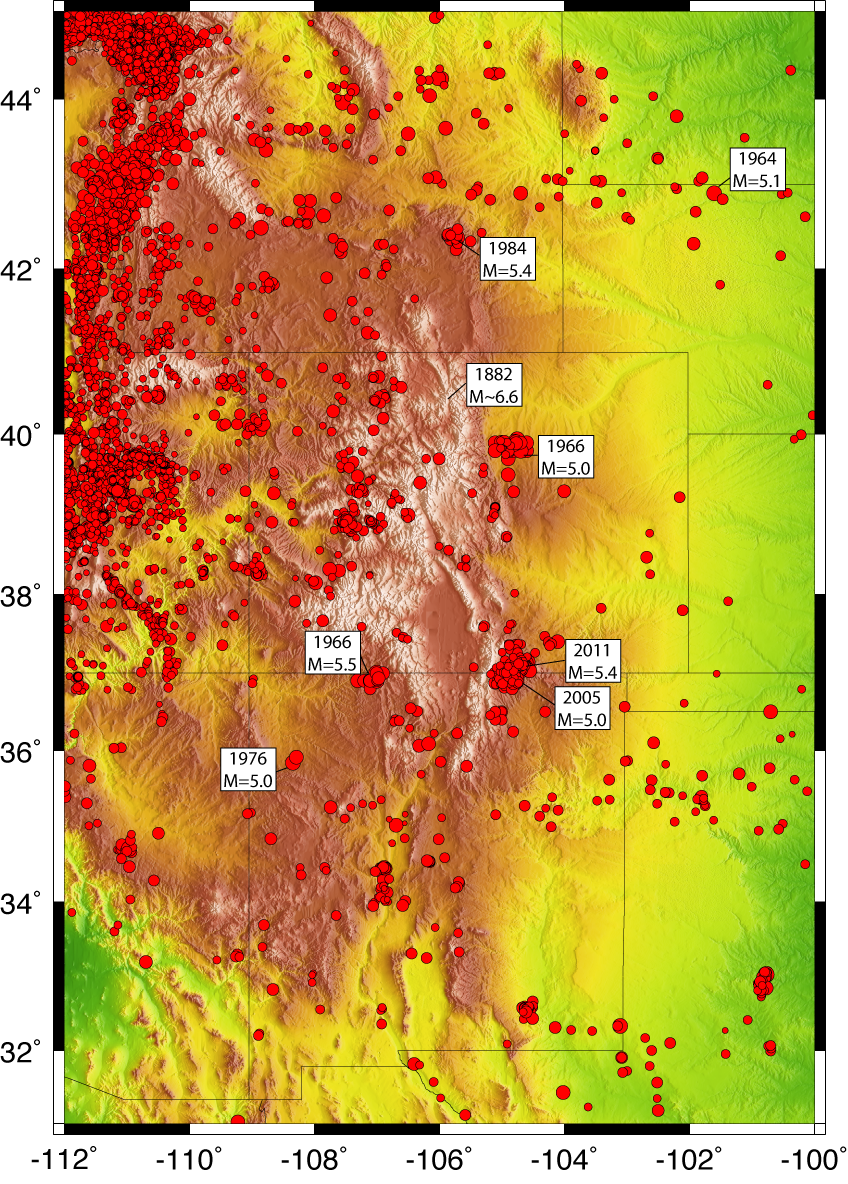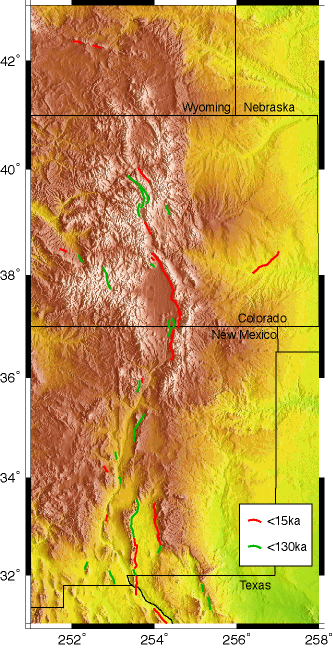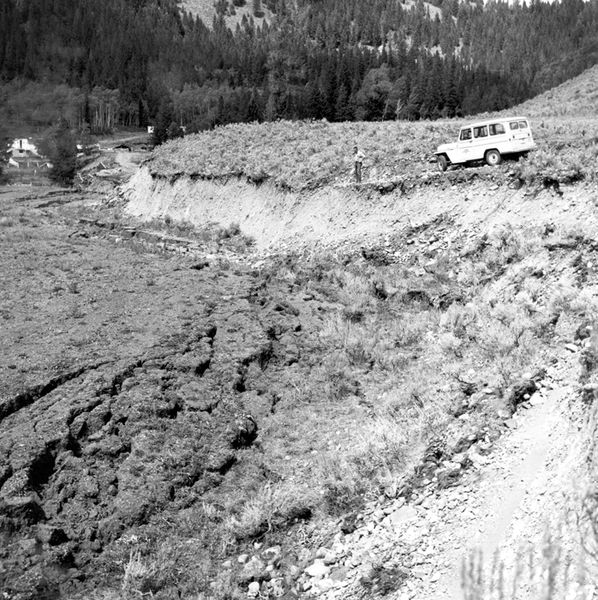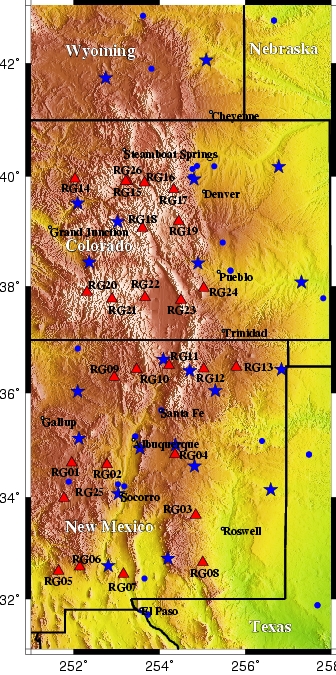 Earthquakes in the
ANSS combined catalog, 1962 to June 2012.
Earthquakes in the
ANSS combined catalog, 1962 to June 2012.
|
Historical earthquakes in the vicinity of the Rio Grande Rift (including west
Texas, New Mexico, Colorado and southeastern Wyoming) hint at the potential for
larger events in the future. An
1882 earthquake west of Fort Collins, CO
had moment magnitude 6.6 (plus or minus 0.6), and there have been five
earthquakes with magnitude greater than 5 in the past fifty years.
To be useful for understanding earthquake hazard, seismicity should be
observed from a dense seismic network over a long period of time (i.e.,
most of an earthquake cycle). In the Rio Grande Rift region, we have neither a
good seismic network nor a long historical record. Written records
in the region extend back only 150 to 300 years (and are longest in New Mexico),
but the earthquake recurrence interval on major faults is at least 5000
years (see next section!). Also, the CO-WY-NM
region has had poorer seismic instrument coverage than any other earthquake-prone
region in the western United States (for example, prior to 2000 there were
two or fewer permanent seismographs in the entire state of Colorado).
In the map at left,
seismicity in the Intermountain Seismic Belt (the dense cloud of earthquakes in
Utah and stretching along the Idaho-Wyoming border to Yellowstone) is well-measured
down to about magnitude 2 or 2.5, because of a dense (<50 km-spaced) network of
seismographs maintained by the University of
Utah. By comparison, the catalog in the RGR is well-measured only down to
about magnitude 3.5 or 4.
Analysis of the historical seismic record is further
complicated by dramatic increases in seismic activity associated with deep
wastewater injection wells in recent years: The 1966 M5 and associated earthquakes
near Denver, CO in the map at left are well-established to have resulted from deep
nuclear wastewater disposal at Rocky Mountain Arsenal, and activity including the
2005 & 2011 M5+ earthquakes near Trinidad (in the CO-NM border region) relates to energy
industry wastewater injection there. Consequently, spatial
concentrations of background seismicity and other important information such as
magnitude-frequency relations are very poorly known in this region.
|
 Earthquakes in the
Earthquakes in the
 Surface Fault Ruptures
from the
Surface Fault Ruptures
from the  Scarp produced by the
1959 (M 7.5) Hebgen Lake earthquake (image courtesy USGS).
Scarp produced by the
1959 (M 7.5) Hebgen Lake earthquake (image courtesy USGS).
 GPS Surface Velocities
using
GPS Surface Velocities
using 